#b. 1903
Explore tagged Tumblr posts
Text
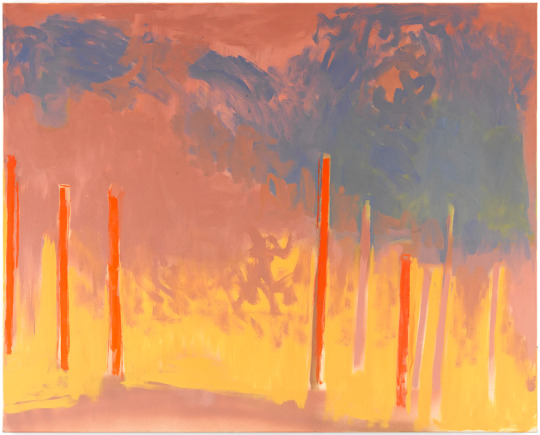
245 notes
·
View notes
Link
91 notes
·
View notes
Text


Qwhat if...
#hoof draws#also the triangle thang on flint's belt#this would also b cute tho what if . what if#ingo is vaguely hyperfixated on trains even tho he can't remember it .#zisu is obsessed with the aeroplanes they just invented in unova (pretend it's >1903#she decides to take a trip to unova to see them ‚ mentions taking the train to [pokeworld equivalent of north Carolina]#ingo perks up and instantly invites himself along .#<-they travel to unova together while excitedly discussing public transport together#ough fixed the typo sorry 👍 i am kindof illiterate sometimes
688 notes
·
View notes
Text

Orville Wright at the controls, while his brother Wilbur looks on, made the first controlled, sustained flight of an engine-powered, heavier-than-air aircraft with the Wright Flyer on December 17, 1903, four miles south of Kitty Hawk, North Carolina, at what is now known as Kill Devil Hills.
#wilbur wright#photography#orville wright#the wright brothers#1900s#b&w#12/17#history#inventor#invention#airplane#plane#reddit#1903#kill devil hills#north carolina#kitty hawk#wright flyer#stem#aviation
13 notes
·
View notes
Text

Caption: WINDMILL KRIMPENERWAARD DAIRYLAND
Booklet Description: 21 THE KRIMPENERWAARD'S rich and verdant dairyland still depends upon the windmill to drain the water from its sunken polderlands. Although the areas now being reclaimed are kept dry by pumps, some 1,300 windmills still do a day's work. In the earliest days, men bailed out their lands by buckets, emptying the water over the edge of the crude dikes. Then came a hand-worked mill with buckets fastened to wooden wheels. The windmill followed, becoming the symbol of Holland.
Brand: View-Master Packet Title: Holland Reel Title: Holland Reel Subtitle: N/A Reel Number: B 1903, Reel Three Reel Edition: N/A Image Number: 21 Date: Undated
#sawyer's inc.#viewmaster#view-master#holland#international packets#travel packets#b 190#b 1903#krimpenerwaard#windmill
12 notes
·
View notes
Text

Josephine Portrait of Miss B. 1903
0 notes
Text




Red Chalk Drawings
Study for a Young Woman, 1890, Simeon Solomon
Head study of a Girl, 1903, Arthur Hughes
Louisa, wife of Murray Marks, 1868, Dante Gabriel Rossetti
Portrait of a Woman, Alice Mary Chambers (b.1854/5)
#pre-raphaelite#art#victorian art#pre raphaelite#preraphaelite#dante gabriel rossetti#simeon solomon#arthur hughes#alice mary chambers#red chalk#sanguine chalk#drawing
411 notes
·
View notes
Text
Here's your daily reminder that...
Jews are only 0.2% of the worlds population but...
Jews make up 14% of the World Total and 38% of the United States of America total winners for the Nobel Prize for Literature (source).
Of the 965 individual recipients of the Nobel Prize and the Nobel Memorial Prize in Economic Sciences between 1901 and 2023, at least 214 have been Jews or people with at least one Jewish parent, representing 22% of all recipients. (source)
Jews make up 14% of the total winners of the Pulitzer Prize for Fiction 18% of the total winners of the Pulitzer Prize for Poetry; 53% of the total winners of the Pulitzer Prize for Non-Fiction (source).
Jews make up 39% of the total winners of the Antoinette Perry (Tony) Award for Best Play; 54% of the total winners of the Tony Award for Best Book of a Musical (with 62% of all Composers and 66% of all Lyricists of Best Musical-winning productions being Jewish) (source).
Jews make up 40% of the total winners of the Academy Award (Oscar) for Best Original Screenplay; and 34% of the total winners of the Academy Award for Best Adapted Screenplay (source).
Although Jews constitute only 3% of the U.S. population...
80% of the nation’s professional comedians are Jewish (source).
90% of American comic book creators are jewish (source)
38% of the recipients of the United States National Medal of Science are Jewish (Source).
Jews are very successful, with educational levels higher than all other U.S. ethnic groups with the exception of Asian Americans, and income levels the highest of all groups. Six out of ten Jewish adults have college degrees, and 41% of Jewish families report a household income of $75,000 or more” (source)
Jews are a minority across the globe. We've been historically opressed and hated. But these key figures from history are all Jewish and loved, yet many don't even know they're jewish (or they don't know these people in the first place!):
Stan Lee (birth name: Stanley Martin Lieber) - An American comic book writer and editor, Former executive vice president and publisher of marvel Comics, creator of iron-man, spider-man, and more.
Albert Einstein - a Theoretical physicist, Received the 1921 Nobel Prize in Physics, developed the theory of relativity and the "worlds most famous equation" (E = mc^2), and more.
Ruth Bader Ginsburg - Former Associate Justice of the Supreme Court of the United States, co-authored the initial law school casebook on sex discrimination, co-founded the Women’s Rights Project at the ACLU in 1972, and more.
Jack Kirby (birth name: Jacob Kurtzberg) - an American comic book artist, co-creator of Captain America, one of the most influential comic book artists
Harry Houdini (birth name: Erich Weisz) - a Hungarian-American escape artist, illusionist, and stunt performer, noted for his escape acts.
Emma Lazarus - An American author remembered for her sonnet "The New Colossus," Inspired by The Statue of Liberty and inscribed on its pedestal as of 1903.
Julius Rosenthal, Lillian Wald, Rabbi Emil G. Hirsch, Stephen Wise, and Henry Moskowitz - Jewish activists that helped form the NAACP along with W.E.B. Dubois, Ida B. Wells-Barnett, and Mary Church Terrell.
Mark Zuckerberg - Founder and CEO of Meta, a businessman who co-founded the social media service Facebook, and within four years became the world’s youngest self-made billionaire Harvard alumni.
Joseph Pulitzer - a politician and newspaper publisher, his endowment to the Columbia University established the Pulitzer Prizes in 1917, he founded the Columbia School of Journalism which opened in 1912.
Jacob William Davis - a Latvian tailor who is credited with inventing modern jeans and who worked with Levi Strauss to patent and mass-produce them, died.
Irving Berlin - drafted at age 30 to write morale-boosting songs for military revues (including “God Bless America”). Many Berlin songs remained popular for decades, including “Puttin’ on the Ritz,” “Cheek to Cheek,” “Anything You Can Do (I Can Do Better),” “There’s No Business Like Show Business,” and two celebrating Christian holidays: “White Christmas” and “Easter Parade.”
Rabbi Abraham Joshua Heschel - received his doctorate in Berlin. He was arrested by the Nazis in 1938, moved to the U.S. in 1940, and became an influential figure in the 1960s, marching with the Rev. Martin Luther King Jr. in Selma, Alabama, and speaking out against the Vietnam War.
Elie Wiesel - Romanian-American writer and professor, holocaust survivor, nobel laureate, political activist. Authored 57 books including Night, a work based on his experiences as a Jewish prisoner in the Auschwitz and Buchenwald concentration camps
Bob Dylan - an icon of folk, rock and protest music, won the Nobel Prize in literature for his complex and poetic lyrics.
J. Robert Oppenheimer - ran the Manhattan Project, considered the "father of the atomic Bomb," presented with the Enrico Fermi Award by President Lyndon Johnson.
Betty Friedan - co-founded the National Organization of Women and became its first president, wrote The Feminine Mystique (1963) and helped spark the second wave of feminism.
Gloria Steinem - one of the most prominent feminists of all time, launched Ms. Magazine and co-founded the National Women’s Political Caucus with Bella Abzug, Shirley Chisholm, Betty Friedan and Myrlie Evers-Williams, widow of Medgar Evers.
Sergey Brin - an American businessman best known for co-founding Google with Larry Page, president of Alphabet Inc.
Judith Heumann - a founder of the disability rights movement, led a 26-day sit-in at a federal building in San Francisco. The protest spurred implementation of Section 504 of the Rehabilitation Act, a precursor to the Americans with Disabilities Act.
Larry Kramer - co-founded Gay Men’s Health Crisis in response to the AIDS epidemic but was soon ousted over his confrontational activism. He went on to help launch a more strident group, ACT UP, and wrote a critically acclaimed play, The Normal Heart, about the early AIDS years in New York City.
Steven Spielberg - released his critically acclaimed epic film Schindler’s List, based on the true story of a German industrialist who saved Jews during the Holocaust. The movie won seven Oscars and led Spielberg to launch the Shoah Foundation at the University of Southern California, which filmed interviews with 52,000 survivors of the Holocaust and genocides in Nanjing and Rwanda.
Calvin Klein - made designer jeans and the infamous ad starring Brooke Shields revolutionized the fashion industry, sold his company to Phillips-Van Heusen (now PVH) for $430 million. Klein was the first designer to win three consecutive Coty Awards for womenswear.
Daveed Diggs - an American actor, rapper, and singer-songwriter. he originated the dual roles of Marquis de Lafayette and Thomas Jefferson in the musical Hamilton, for which he won a 2016 Tony Award for Best Actor in a Featured Role in a Musical. Along with the main cast of Hamilton, he was awarded a Grammy Award for Best Musical Theater Album in the same year.
And so much more. (a pretty decent list is available here)
Not only that, but the following are all Jewish inventions...
The Teddy Bear - made by Morris and Rose Michtom in honor of Theodore "Teddy" Roosevelt.
The Ballpoint Pen - *the first commercially sucessfull ballpoint pen was made by Lazlo Biro, a Hungarian-Jew, and his brother.
Mobile Phones - made by Martin Cooper, nicknamed the "father of the cellphone", and was born in Chicago to Ukrainian Jewish immigrants.
The Barbie - made by Ruth Marianna Handler, born to Polish-Jewish immigrants.
Power Rangers - made by Haim Saban, a Jewish-Egyptian
Video Games - made by Ralph Baer, a German-Jew
Peeps - made by Sam Born, a Russian-Jewish immigrants who came to the United States in 1909.
Cards Against Humanity - created by a group of Jewish boys from the same high school
Many Superheroes including Superman, Ironman, spider-man, batman, and more!
and more! (an illustrated list available here.)
Conclusion: If you're Jewish, be proud. You come from a long line of successful people. No matter what happened to them, Jews persevered, and they strived for sucess. Be proud of your culture, your history, these are your people. You're Jewish.
(feel free to reblog and add more, or just comment and i'll add it!)
Last Updated: June 25, 1:35 AM EST
#funkowrites#jumblr#jewblr#jewish tumblr#israel solidarity#judaism#jewish#antisemitism#stop antisemitism#op is a proud jew#proud to be jewish#jewish joy#jewish positivity#jew#proud jew#we will persevere
570 notes
·
View notes
Text
Words for Inns & Hotels
Inn
guest house (Old English) ⚜ hostry (1377) ⚜ harbergery; host (1382)
hostel (c.1384) ⚜ hostelry (c.1386) ⚜ harbergage; inn (c.1400)
hostelar (1424) ⚜ host-house (1570) ⚜ fondaco (1599)
auberge; sporting house (1615) ⚜ albergo (1617) ⚜ rancho (1648)
posada (1652) ⚜ public house (1655) ⚜ inn-house (1694)
livery tavern (1787) ⚜ roadhouse (1806) ⚜ meson (1817)
tambo (1830) ⚜ gasthaus (1834) ⚜ estalagem (1835)
locanda (1838) ⚜ temperance inn (c.1849) ⚜ sala (1871)
bush-inn (1881) ⚜ ryokan (1914) ⚜ pousada (1949)
B and B (abbreviation for "Bed and Breakfast") (1961)
Hotel
hotel (1687) ⚜ hotel garni (1744) ⚜ lodge (c.1817) ⚜ gasthof (1832)
temperance house (1833) ⚜ temperance hotel (1837)
railway hotel (1839) ⚜ parador (1845) ⚜ palace hotel (1870)
metropole (1890) ⚜ Ritz (1900) ⚜ Trust House (1903) ⚜ motel (1925)
residential (1940) ⚜ welfare hotel (1952) ⚜ botel (1956) ⚜ floatel (1959)
The turning point in the first category above is around 1600.
Before then, there were relatively few words for a traveller’s lodging, and they form a close-knit etymological community.
The later decades of the 16th century saw a great increase in travel from England to the continent of Europe, during periods of relative peace. Some of it was motivated by the need to avoid religious persecution in England. Some was for cultural reasons.
Travelling theatre companies brought their plays abroad, and the wealthy made cultural visits, especially to France and Italy – forerunners of the ‘Grand Tour’ which would become a major part of the European social scene during and after the late 17th century.
By the 20th century, with travel becoming so much easier, we see words coming from further afield, as English becomes established as a global language
Source ⚜ More: Word Lists ⚜ Notes & References ⚜ Historical Thesaurus
#writing reference#writeblr#dark academia#spilled ink#langblr#worldbuilding#literature#writers on tumblr#linguistics#writing prompt#poets on tumblr#poetry#writing prompts#language#words#creative writing#writing inspiration#inn#hotel#writing resources
111 notes
·
View notes
Photo
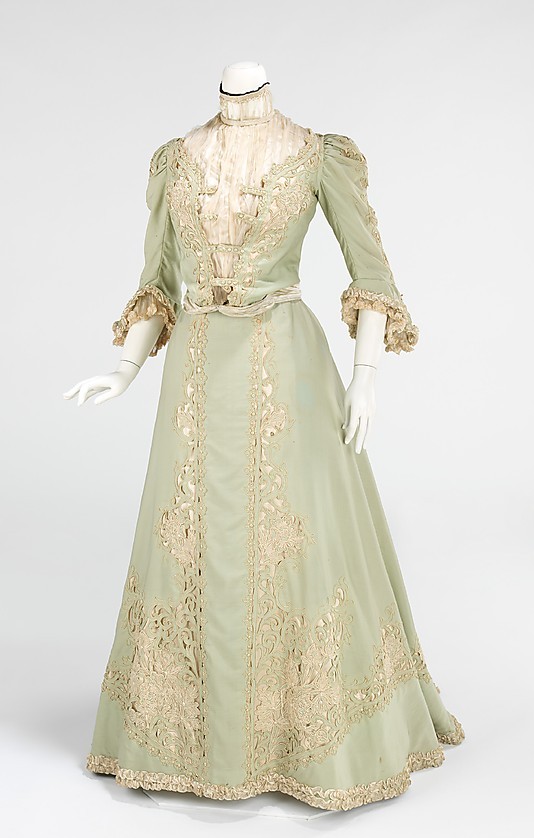
Promenade Dress
c.1903
United States
The MET (Accession Number: 2009.300.307a, b)
#walking dress#fashion history#historical fashion#edwardian#1900s#20th century#turn of the century#green#off white#wool#silk#united states#the met#popular
2K notes
·
View notes
Text

155 notes
·
View notes
Text

Oldsmobile
April 29'th 2004. The last Oldsmobile rolls off the line. You may be surprised to learn, that for a long time Oldsmobile meant innovation. Here are just a few of the Automotive technologies Olds pioneered in it's 100+ years in business:
1898: Olds Motor Vehicle Company exports the first American car, a steam-powered automobile, to Mumbai, India.
1901: The first speedometer offered on a production car was on an Oldsmobile Curved Dash.
1901: Oldsmobile was the first to procure parts from third-party suppliers.
1901: Olds produces 635 cars, becoming the first high-volume gasoline automobile producer.
1901: Oldsmobile becomes the first manufacturer to publicly promote their vehicles.
1902: The Oldsmobile Curved Dash is the first mass-produced vehicle in America.
1903: Oldsmobile builds the first purpose-built mail truck.
1908: Oldsmobile rebadges the Buick Model B as the Oldsmobile Model 20, possibly creating the first badge-engineered car.
1915: First standard windshield introduced by Oldsmobile.
1926: Oldsmobile is the first to use chrome plating on trim.
1929: Oldsmobile creates the first Monobloc V8 engine in its Viking Sister brand.
1932: Oldsmobile introduces the first automatic choke.
1935: Oldsmobile offers the first all-steel roof on an automobile.
1940: Oldsmobile introduces the Hydra-Matic, the first fully automatic transmission.
1948: Oldsmobile offers one-piece curved windshields, along with Buick and Cadillac.
1949: Oldsmobile introduces the Rocket, the first high-compression OHV V8 engine.
1952: Oldsmobile introduces the "Autronic Eye," the first automatic headlight dimming system.
1953: Oldsmobile switches its lineup to the 12v charging system.
1962: Oldsmobile creates the first production turbocharged car, the F-85 Jetfire.
1962: Oldsmobile also creates the first production car with water injection, the F-85 Jetfire.
1966: The Oldsmobile Toronado is the first mass-produced front-wheel-drive American car.
1969: First use of chromed ABS plastic exterior trim on the 1969 Oldsmobile Toronado.
1969: First electric grid window defogger on an American car, the 1969 Oldsmobile Toronado.
1971: The Oldsmobile Toronado is one of the first cars to feature a high-mounted brake light.
1974: The Toronado is the first American car to offer a driver-side airbag.
1977: The Toronado is the first American car with a microprocessor to run engine controls.
1982: First use of high-impact molded plastic body components on the 1982 Oldsmobile Omega.
1986: Oldsmobile introduces the Delco VIC touchscreen interface on the Toronado, shared with Buick Riviera.
1988: The first production heads-up display system is introduced on the 1988 Oldsmobile Cutlass Supreme Indy Pace Car.
1988: Oldsmobile breaks a world speed record with the Oldsmobile Aerotech at 267 mph, driven by A.J. Foyt.
1990: Oldsmobile updates the color touchscreen interface with a built-in cellular phone on the 1990 Toronado Trofeo.
1995: Oldsmobile introduces Guidestar, the first onboard navigation system on a U.S. production car.
1997: Oldsmobile becomes the first American car company to turn 100 years old.
2001: The redesigned 2002 Oldsmobile Bravada becomes the first truck to pace the Indianapolis 500.
90 notes
·
View notes
Text

Barbara Hepworth. b.1903
Three Forms
113 notes
·
View notes
Text

This one is more somber than most (despite the sunny locale). When I set out to photograph cemeteries in Massachusetts, I imagined sprawling hills of death's head graves and a famous grave (or two).
But we cannot discount those that have been forgotten.
This is "Cemetery Hill" in Northampton, MA - it is the final resting place of the unclaimed bodies of those that died at the Northampton State Hospital, a mental institution that ran from 1856-1993.
The records seem to indicate that these people were buried on Cemetery hill: John A. L. Adams (Dec 1852-15 Feb 1905), Annie Bazzell (unknown - 19 November 1904), Kate Benton (unknown - 13 Sep 1903), Jennie Johnson Bregquist (4 Dec 1875 - 1926). Sarah Chapin Brundage (1842 - 27 Mar 1906), Thomas Grove Chaffee (19 Sep 1837 - 26 Jan 1912), Miles B Hicks (1821 - 21 Feb 1898), William Kuhn (1847 - 6 Dec 1884), Catherine Lockerly (1830 - 6 Jul 1884), Francis Alden Loud (10 Oct 1825 - 19 Mar 1885), Elizabeth Lowe (14 Oct 1880 - 12 Oct 1905). Nancy Sage Main (Oct 1813 - 26 Apr 1903), Josephine Villancoeur Monier (unknown - 19 April 1905), John O'Brien (1832 - 21 Sep 1883), Emma Patterson Petterson (unknown - 10 Feb 1905), Melvin C. Stone (unknown - 3 August 1906), and Michael Tool (unknown - 24 January 1905).
Cemetery Hill - Northampton, MA
#art#photography#cemetery#cemetery photography#mass monumetnalist#massachusetts#massachusetts cemetery#Cemetery Hill#Northampton MA#Momento Mori
41 notes
·
View notes
Text

Caption: PAINTINGS OF VAN GOGH, GAUGIN-- KROLLER-MULLER MUSEUM
Booklet Description: 20 KROLLER-MULLER ART MUSEUM, in Veluwe Park, is the finest of its type in Holland. On display are canvasses by Gaugin and other famous artists. But above all is the marvelous collection of 260 paintings and drawings by Vincent van Gogh. Holland has given the world some of its greatest artists. Frans Hals, Pieter de Hooch, Jan Steen, and Jan Vermeer are but a few. Rembrandt's Night Watch is matched in fame only by da Vinci's Last Supper, and Michelangelo's Last Judgment.
Brand: View-Master Packet Title: Holland Reel Title: Holland Reel Subtitle: N/A Reel Number: B 1903, Reel Three Reel Edition: N/A Image Number: 20 Date: Undated
#sawyer's inc.#viewmaster#view-master#holland#international packets#travel packets#b 190#b 1903#Veluwe Park#Kroller-Muller Art Museum#van gogh#gaugin#frans hals#pieter de hooch#jan steen#jan vermeer#da vinci#michelangelo#art museum
15 notes
·
View notes
Text
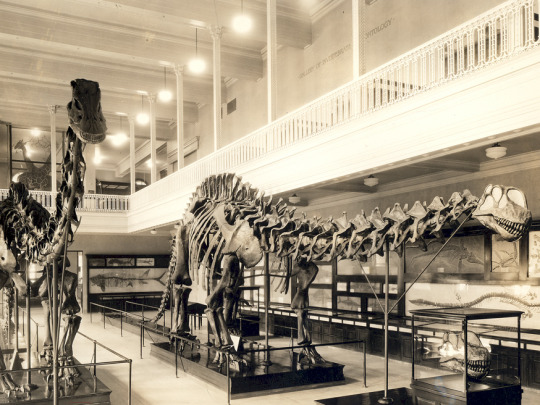
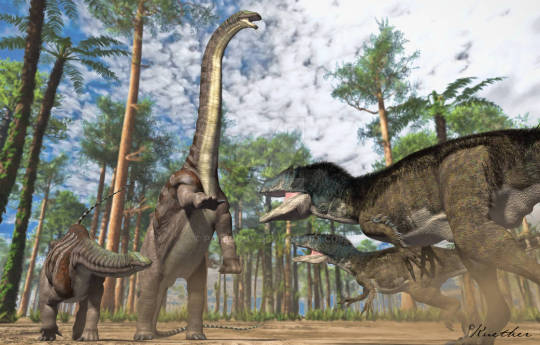
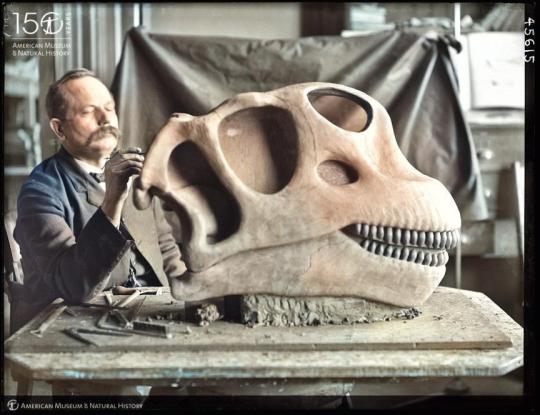
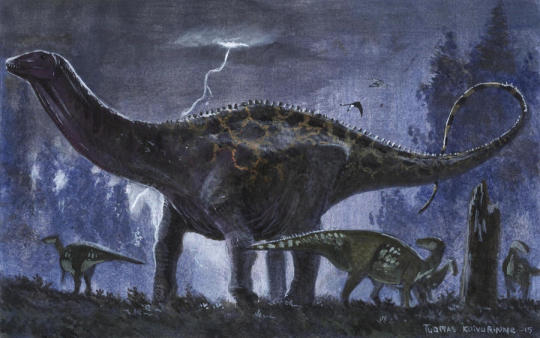
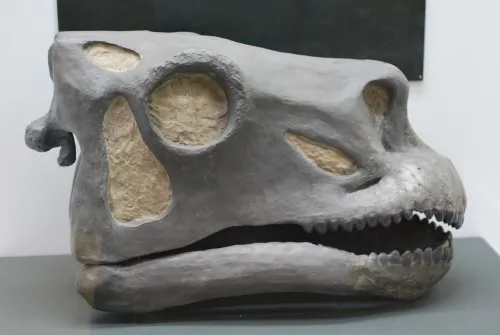



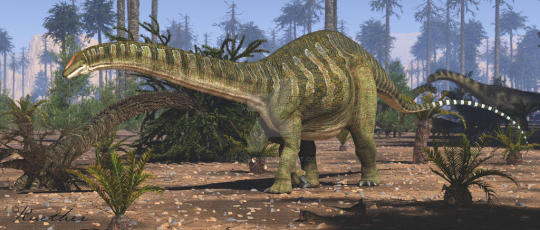
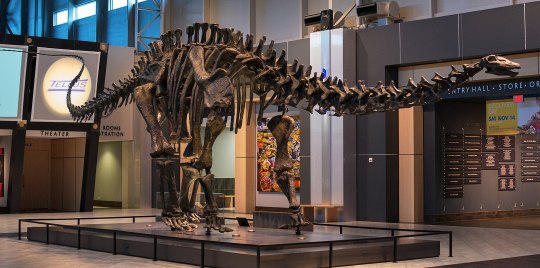
Happy Fossil Day. Happy Fossil Day! Brontosaurus is a genus of herbivorous sauropod dinosaur that lived in North America during the Late Jurassic period some 156 to 146 million years ago. The first remains consisted of a fairly complete skeleton was recovered from Como Bluff Wyoming in 1879 by William Harlow Reed who named its Brontosaurus excelsus, meaning "thunder lizard", from the Greek brontē meaning "thunder" and sauros meaning "lizard", and from the Latin excelsus, meaning "noble" or "high". Despite being one of the most complete sauropod skeletons known at the time, the brontosaurus type specimen along with another found in 1880 lacked skulls. In 1903 Elmer S. Riggs argued that Brontosaurus was so similar to Apatosaurus that it should become a synonym. However, when the first skeleton of Apatosaurus was mounted in the American Museum of Natural History in 1905, it bore the name Brontosaurus, in additional confusion because no skulls where known from these animals a faximilally was constructed based off of other sauropod skull remains now know to be Camarasaurus and brachiosaurs which gave the mount a truly bizarre head. This one mounted skeleton is the reason why so much controversy would exist for this dinosaur over the next hundred years. It was not until a 1975 study by John Stanton McIntosh and David Berman re-describing the skull and jaws of Apatosaurus and Diplodocus was published that things would really get moving for more accurate reconstructions. In 1995 the original Brontosaurus mount from 1905 finally got a skull revision to be like that of Apatosaurus, and was also now named as Apatosaurus excelsus. It took the best part of a century to reveal the true shape and form of Apatosaurus, and for most of this time the majority of paleontologists agreed with the opinion of Elmer S, Riggs from 1903 that Brontosaurus should be a synonym to Apatosaurus. One notable exception however was Robert T. Bakker, who in 1998 argued that Apatosaurus and Brontosaurus were distinct. Bakker would be proven right in 2015 when an extremely in-depth sauropod study conducted by Emanuel Tschopp, Octavio Mateus and Roger Benson found that the Brontosaurus type species B. excelsus was infact a valid genus. Reaching 62 to 72 (19 -22m) in length and 30,000 to 38,000 (13,600 -17,250kgs) in weight, brontosaurus was large, long-necked, and quadrupedal with a long tail terminating in a whip-like structure. The cervical vertebrae are notably extremely robust and heavily-built, in contrast to its lightly built relatives Diplodocus and Barosaurus. The forelimbs were short and stout whereas the hindlimbs were elongated and thick, all signs that brontosaurs was remarkably strong and muscular. Brontosaurus would have likely lived in loose herds acting as a nonselective browser feeding upon ferns, cycads, ginkgos, and horsetails, as it coexisted with with a menagerie of other morrison taxa such as the Diplodocus, Barosaurus, Brachiosaurus, Stegosaurus, Dryosaurus, Camptosaurus, Allosaurus, Torvosaurus, and Ceratosaurus.
Art Used in this video belongs to the following creators
Brontosaurus excelsus: Paleoguy https://www.deviantart.com/paleoguy/art/Brontosaurus-excelsus-526754288 https://www.deviantart.com/paleoguy/art/Brontosaurus-780543420 https://www.deviantart.com/paleoguy/art/Brontosaurus-Allosaurus-570575957
Brontosaurus is Back: tuomaskoivurinne https://www.deviantart.com/tuomaskoivurinne/art/Brontosaurus-is-back-526656913
Brontosaurus through the ages: Nix Draws Stuff https://nixillustration.com/tag/brontosaurus/
#pleistocene pride#pliestocene pride#jurassic period#jurassic#dinosaur#dinosaurs#sauropod#brontosaurus#apatosaurus#fossil#fossil day#history#paleontology#mesozoic
180 notes
·
View notes